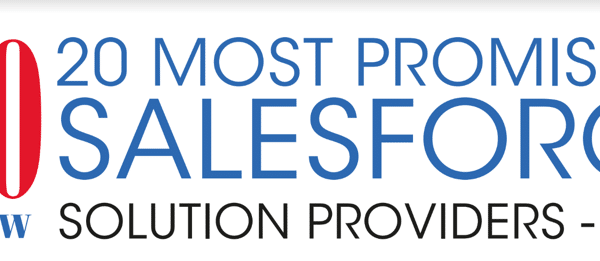Your Key Account Management (KAM) shouldn’t be time-consuming or difficult. It must be organized, results driven (KPIs), dynamic (change with your business and your customers) and in your CRM. We can’t overstate how critical it is to store your plans in your CRM. This ensures the entire team is working in unison and collaborating. In addition, in the event of flux in the account team business continuity is maintained. There is no loss of momentum, allowing competitors to gain a beachhead. The four aspects of key account management to ensure success, stability and revenue growth.
In order to manage the account, you have to have a plan. The plan must include at a minimum the following.
- Management of the Account
- Organizational Map and Stakeholder Management
- Management and Planning of Opportunities
- Planning and Execution of Meetings
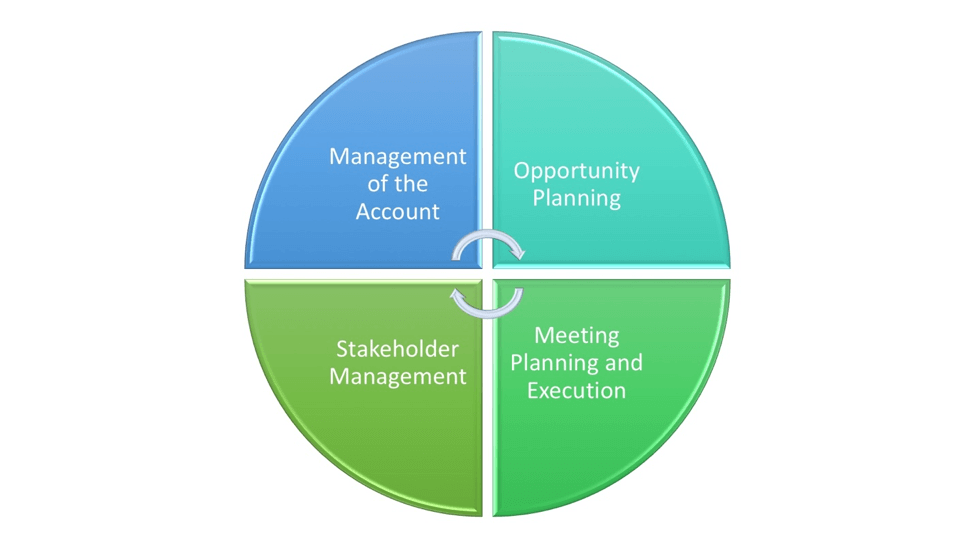
Management of the Account
- Customer’s goals and objectives, what are their short and long-term goals and objectives. In addition, to the goals and objectives how are they going to measure them to determine the success or failure
- Mapping your goals and objectives back to the accounts. This ensures you’re in sync with them allowing you to track your KPIs for the account.
- Customer Initiatives – Track White Space/Green Field, what are their initiatives, what are they planning on doing to meet their goals and objectives. Understanding these allows you to position products and solutions, feeding your sales pipeline. Identifying initiatives before your competitors allow you to frame the conversation.
- Milestones, track your progress and ensure nothing falls through the cracks. As the quarterback for the account, you have to delegate and assign tasks to the team. Tracking milestones are the perfect solution to accomplish this.
- Red Flags, what can go wrong to derail this account, perceived and actual. Is there a mitigation plan for each one?
- Identifying the customer team, how are the stakeholders and there current stance and role.
- SWOT Analysis, without a concise and accurate SWOT Analysis it’s extremely difficult to manage an account.
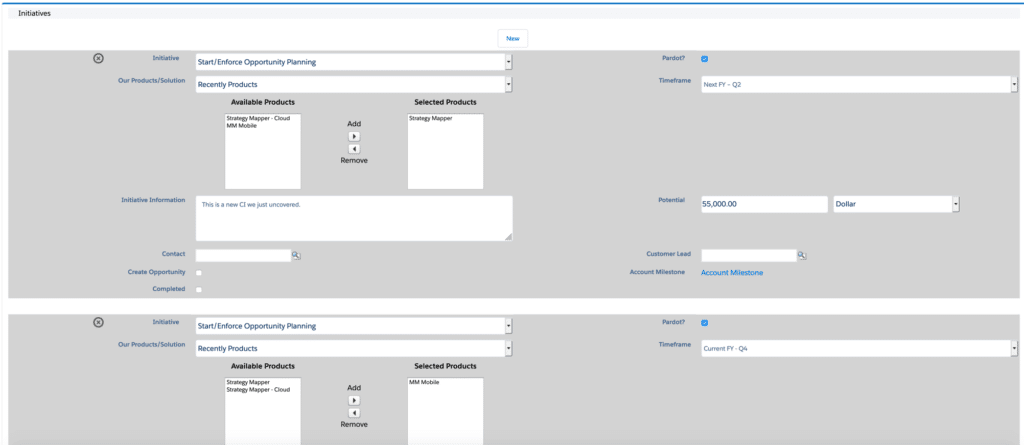
An Action Plan and Playbook are essential to managing key accounts. They allow, everyone on the direct team and in-direct team to have a firm grasp of the account and what needs to be accomplished to drive success.
Organizational Map and Stakeholder Management
An up to date Organizational Map is critical, knowing who reports to who allows you to plan your contact list out. As you can see in our Org Map, we have identified the Stance and Role of our contacts and stakeholders. The Org Map must also show lines of influence or relationships.
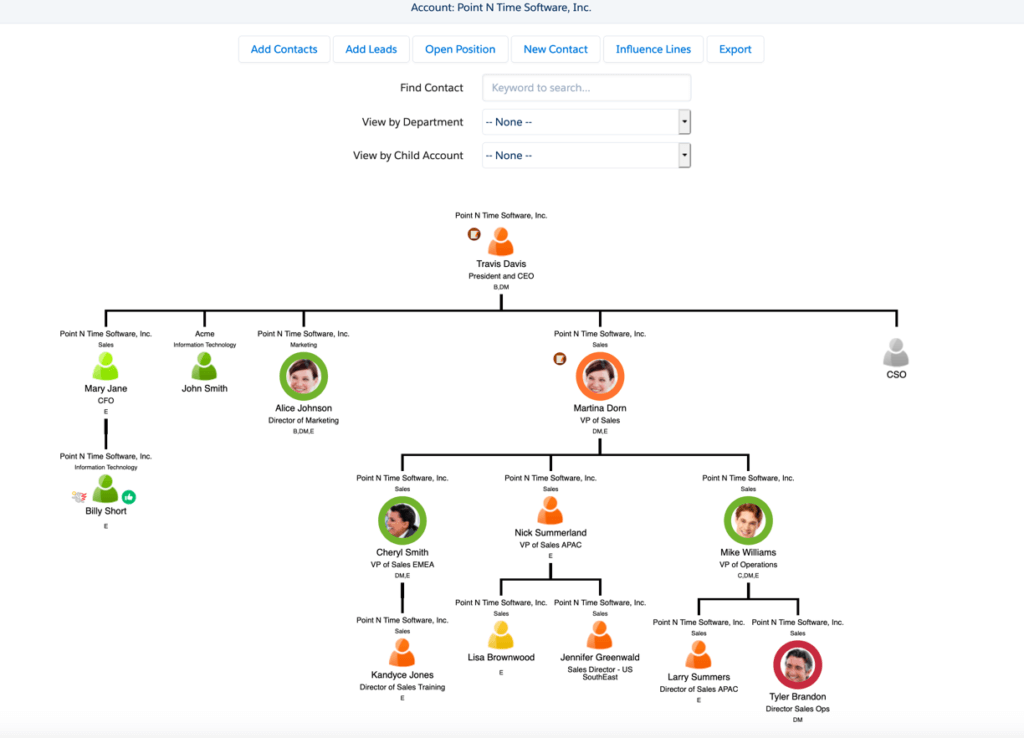
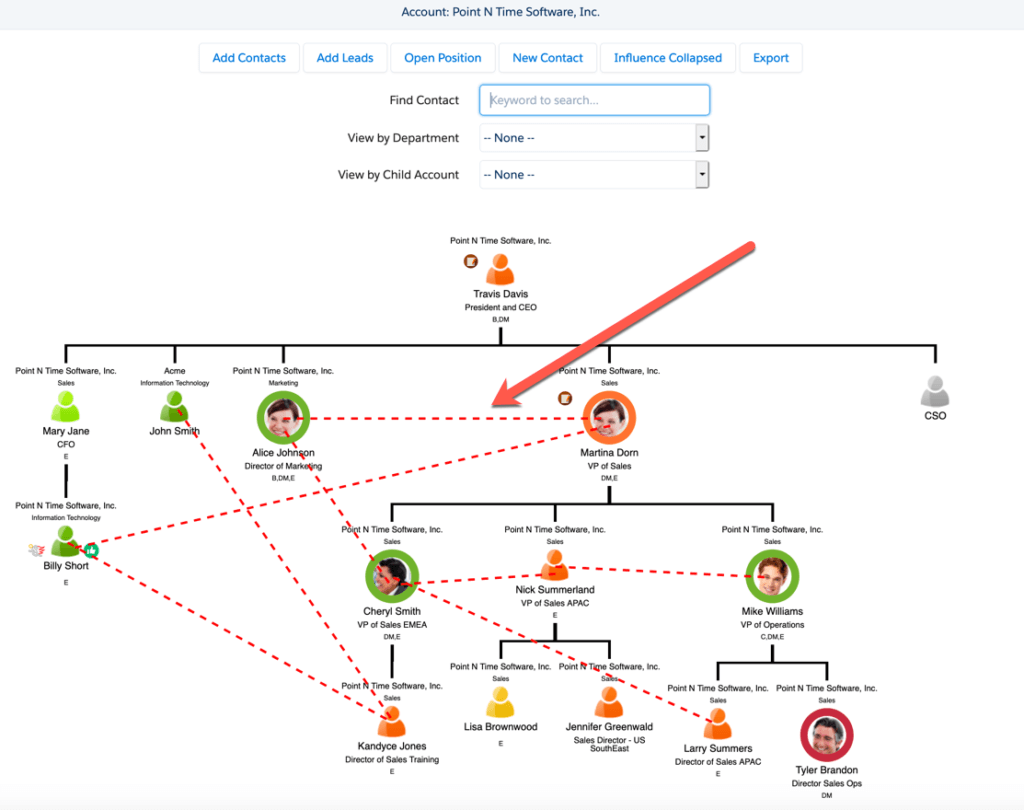
Opportunity Planning and Management
Managing and planning opportunities in your key accounts are the revenue aspect of key account management. These are what produces revenue allowing you to hit your revenue targets.
At a minimum an opportunity plan must include the following:
1. Your Strategy, Tactics and Value Proposition, without these it’s difficult if not impossible to build out a plan.
2. How the customer is going to make their selection, what are the steps, processes and gates they are going to make the vendor navigate through? Also, who at the customer is responsible for each one.
3. Real or perceived Red Flags and a mitigation plan for each one.
4. Milestones (selling process) do you need to accomplish to be successful. These should be based on the product or solution you are selling. You sell different products differently. Here is how we track milestones, as you can see we not only track them based on colour-code, we can even assign them to other team members and track the progress.
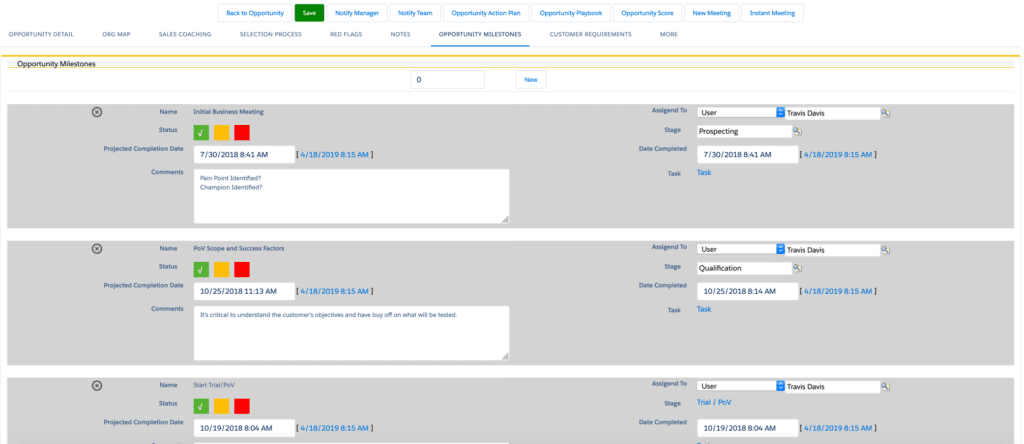
Meeting Planning and Execution
This is where the rubber hits the road. If you don’t plan and execute your sales meetings, you will fail. Your sales meeting need the following outcomes. You have to invite the correct stakeholders and you have to have clearly defined goals and objectives. The desired outcomes are dependent on what type of meeting is it; strategic account meeting, initial demonstration, close meeting and so on.
At a minimum the outcomes for a demonstration meeting are:
1. Who – Stakeholders current stance and role
2. Why – How have you determined their current stance and role
3. When – Decision date, not the close date
4. Current Pain Points – Why are they even talking to you
5. Customer Requirements – Know what they are looking to accomplish
6. Your Strengths – What is setting you apart from the competition
7. Your Weaknesses – What not to talk about and have a plan to mitigate
8. Competitors (Strengths and Weaknesses) – Who are you competing against, normally by the time you are brought into an opportunity there are at least two other vendors wanting their business. If you’re the incumbent, you might have a leg up. As a general rule regardless, know the competitors.
The information and actionable sales intelligence gathered in your meetings must feed into our plans automatically.
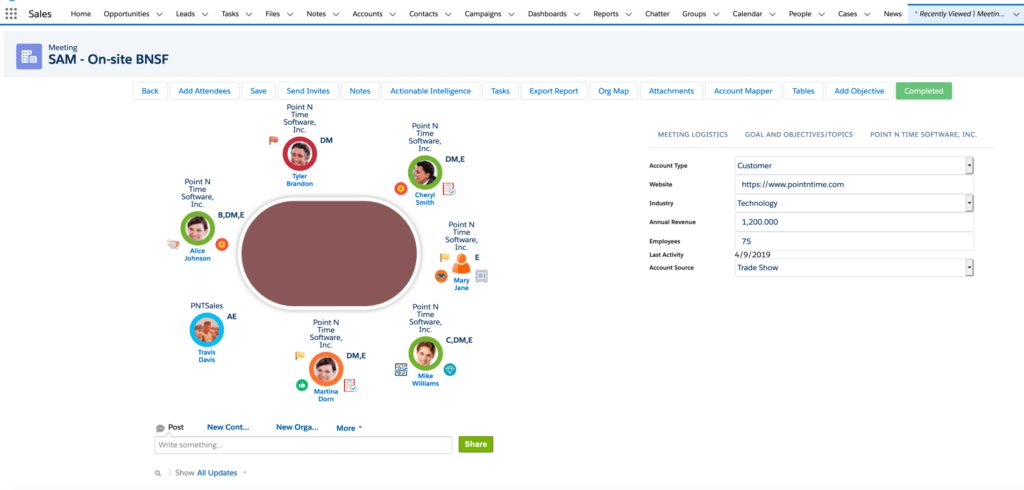
In closing when you and your team manage your key accounts and focus on the four key aspects managing and planning is easy, beneficial and leads to success and revenue. Also, having the right solution is key we use Strategy Mapper, it’s a 100% native Salesforce application.
.



